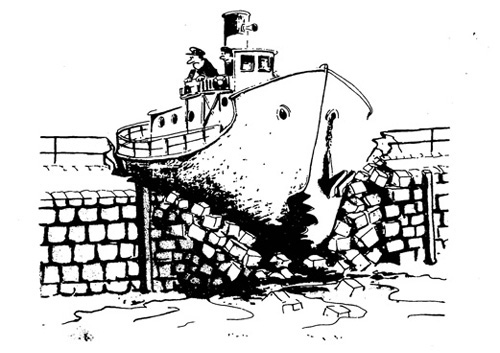Salty Dog Talk (11 page)
Authors: Bill Beavis
Taken aback
The arguments between nations as to how much of the sea surrounding their coastline should belong to them was settled by a compromise suggestion from Bynkershoek in his book
De Dominio Marks
published in 1702. He proposed that a country should exercise control only over the amount of water she could defend from the shore. This was agreed to be 3 miles, the range of the smooth bore cannon.
Sails are controlled with ropes called
sheets
and the most any sail has is two – a lee side sheet and a weather sheet. The sailor’s contention is that if a man who had been drinking was given as many as
three
sheets he could still not steady or control himself on a regular course. An alternative idea is that of a ship caught with three (jib) sheets in the wind as she goes from one tack to the other. The sails would flap and the ship would wallow and stagger in the locomotion of a drunk.
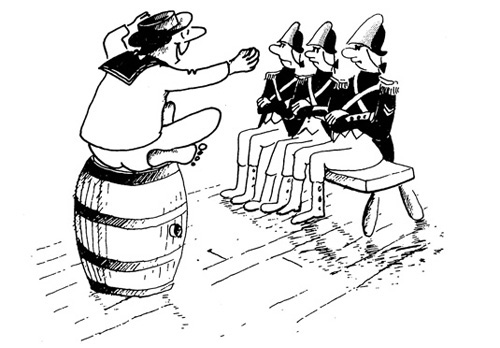
Tell it to the marines
From the days of sail and with special reference to the English Channel where outward bound ships could make very little progress against the incoming tidal stream and the prevailing south west wind. In such conditions they would frequently
tide over
or anchor for those hours when the tide was against them. Hence to rest up and let the difficulties sort themselves out.
The word is derived from
tide
hence the meaning of being well arranged and methodical as associated with tides. We still use the word in a seasonal connection: even
tide
, spring
tide
, etc.
In about the year 1500 many ships were built for the wine trade then carried in wooden casks or
tuns
(from the French word
tonneau
) and standardised at 2240 lb. The ships were measured and assessed according to the number of
tuns
they could carry. Hence the word ton became the measure of capacity for ships, and the measurement of weight ashore.
Sailing barges trading the rivers and estuaries of the East Coast of Britain carried only two men as crew and were unable to ‘sound’ the depth of water. They managed by the simple expedient of running the barge to the side of the river or channel until they felt it
touch
the bottom, then promptly
go
about onto the other tack. The sudden change in direction and the force of a fifty ton barge slewing round was usually sufficient to ensure they kept going, but sometimes of course the barge would become stuck. From this comes the risk implicit in the expression ‘touch and go’.
From the days when each man of a gun’s crew was given a number. It was the job of Nos 2 and 6 to haul the gun back through the gun port in preparation for firing after it had been loaded.
Under the Weather
To feel ill. Originally it meant to feel seasick or to be adversely affected by bad weather. The term is correctly ‘under the weather bow’ which is a gloomy prospect; the weather bow is the side upon which all the rotten weather is blowing.
To get started. Often spelt this way although correctly the term is
under way
. In law it means not at anchor nor made fast to the shore or aground. The significance is that the vessel’s rudder is effective, that she can be handled and must therefore obey the ‘rule of the road’. The word
weigh
has actually nothing to do with forward movement but concerns the raising or weighing of the anchor. Another expression which means get started is
set sail
. Sails were set when the gaskets tying them to the yards were let go allowing the sails to fill with wind. It is now a figurative term and everything from hydrofoils to nuclear submarines set sail.
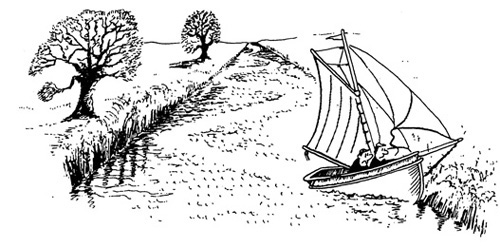
Touch and go
Comes from the infant days of steamships which not infrequently ran out of coal or broke down. In those uncertain times it was a matter of great satisfaction and importance for them to make port unaided. It quickly took on a metaphoric meaning – ships which sailed home under jury rig would still be said to have made it ‘under their own steam’. Hence its present use – without assistance. The alternative,
taken in tow
, is another expression adopted by landsmen.
An argument or fierce row. Possibly from the continual disagreements that must have gone on between sailors and engineers drafted aboard the first steam auxiliary ships. Apart from the unaccustomed smoke and soot, sailors had the additional chore of erecting a funnel on deck and lowering the screw propeller each time the engine was used. The order ‘Up funnel, down screw’ prompted the ships to be known as the
up and downers
.
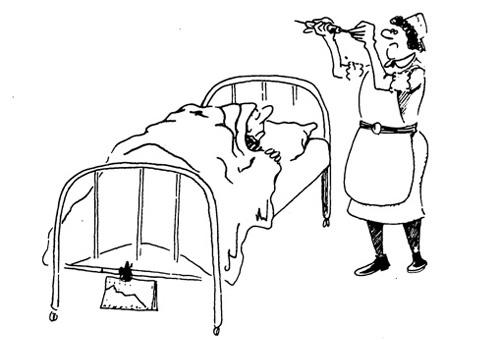
Under the weather
Van
The word was originally
vant
, a corruption of the French
avant
. It was the name given to the leading group of ships in a battle fleet and dates from the 17th century – in the van, up front. Previously naval ship battles had been fought at random and this was the first attempt to organise fleets into divisions.
In the nautical sense
veer
is to slack away a rope. The word takes its wider meaning from fact that when the wind moved aft, relative to the vessel, the ropes which controlled the yards and sails would have to be veered. From this developed the meteorological term, and finally it has come to describe a gradual change in direction of anything.
Wallop
After the French fleet had raised and burnt Brighton on the Sussex coast in the reign of Henry VIII Sir John Wallop was ordered by the king to carry out a reprisal raid. Sir John sailed with his fleet to Normandy where he is reported to have burnt twenty-one towns and villages and to have demolished several harbours. Ever since the name
Wallop
has been the name synonymous with a beating or good hiding.
A failure, disappointment – from the early days of signal flags when messages were recorded on a slate and a cancelled message was sponged or washed out.
The word relates to the midship or centre part of a ship’s deck known as her
waist
. The men who worked this part were generally older, less fit, disabled or landsmen ‘pressed’ into service, men who could not be trusted to work aloft. They were put to work in the ship’s waist mending sails, splicing, cleaning, etc. and because they worked this part of the ship they came to be called
waisters
. Somewhere down the line the ‘i’ has been dropped and the term has come to describe idlers, no good layabouts.
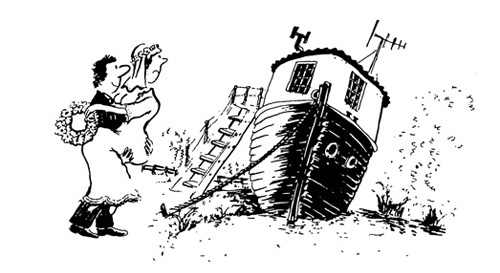
Wedding garland
Keep a good watch. It took an extra effort for the lookout to train his eye on the
weather
side of the ship as it would mean his having to face the wind, the spray and the rain. From the weather side however, always came the first sign of a change (in the weather).
Surprisingly the custom of the bride carrying a bouquet of flowers comes from the sea. It was traditional when a ship came home to hoist some greenery at the mast – a symbol, the men had come home safely to the good earth. Then gradually it became a signal for the women to come aboard. Later it signified nuptials and a garland of flowers was flown from the mast top whenever a crew member was about to be married. Garland comes from the Greek meaning a collection of flowers.
A phrase that once had legal value as shown in this extract from
Select Pleas in the Court of Admiralty 1536
; ‘I promys and me bynd to pay within … daies after the save aryving of the said good ships into the River of Temys, the port of her right dyscharge’.
To hope for the impossible. It was the sailor’s superstition that he could call up the desired wind by whistling, a belief still current amongst some yachtsmen. Yet whistling on ships has been either forbidden or discouraged for many years. There are a number of reasons; it can be confused with orders piped on the boatswain’s call (or whistle); it was said to be the signal for the commencement of the Mutiny of the Nore 1797; and because it is generally felt that whistling brings too much wind – a storm in fact. It is held to be unlucky for actors and stage hands to whistle backstage.
From the term to give a
wide berth
which ordered the helmsman to steer well clear of a rock, a shoal, or whatever danger presented itself. Hence a generous margin.
Originally the nickname for a sailing ship, it has somehow come to mean a talkative or boastful person.
Some English and American landowners were prevented, by a clause in the title of their estates, to either fell or sell timber as this was reserved for building ships for the Navy. However, this did not include trees which were blown down and so a windfall came to mean a financial blessing, an unexpected gift of money.
Figuratively somebody in poor mental or physical shape and another example of the sailor’s delightful habit of likening ships to the human condition. It is interesting that quite a few of these centre around shipwreck which cannot say much for the company he was keeping.
Derelict
, for example, a ship abandoned by her crew and borrowed to describe someone who floats on a sea of misery.
Stranded
, another example, comparing the lost and helpless with a ship run aground on the strand or sandy shore.
On the rocks
describes a rather more serious condition: a ship will very rarely be saved once impaled by rocks. (Nothing to do with ice
in the drink
– which, incidentally, was a term coined by airmen bailing out over the sea.) Left
high and dry
is another reference to grounding, so is
touching bottom
as the economy does now and then.
Hard and fast
describes a ship hard aground and fast that she cannot be moved, a term which still means inexorable today.
